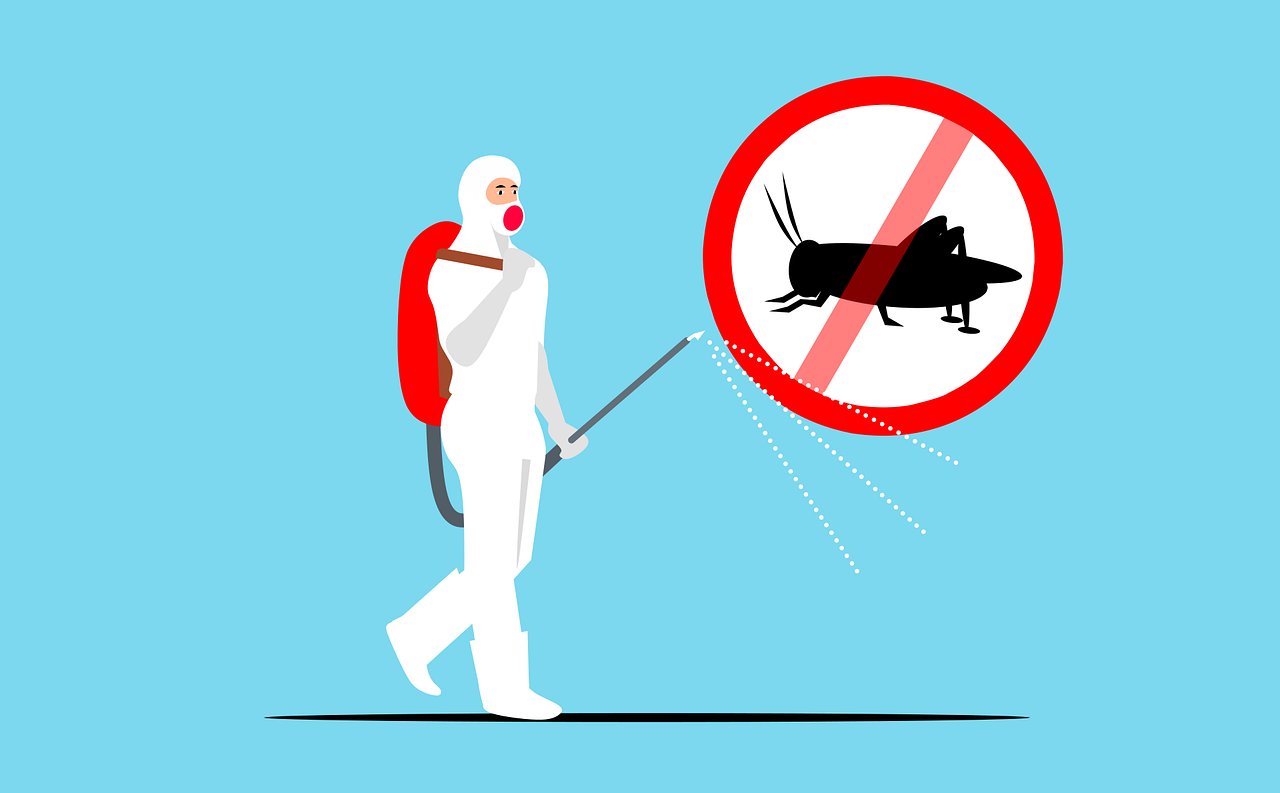
This blog post was written by Caleb Goertz, service technician at Interstate Pest Management.
When pests get into the house like unruly neighbors that will never leave, your first question is probably how to get them out. As you are aware, there are many products specifically marketed to help you do just that, well not the unruly neighbors part (yet…). But are pest treatments safe for your family, and pets (and yourself)?
The answer is yes and no.
When products are misapplied based on the information and instructions provided on the product label, they can be harmful to humans and other animals. When the label is carefully followed, the answer is yes, they can be used with minimal risk.
How to Determine if a Pest Control Product is Safe
Deciding whether a pest control product is safe is tricky. The National Pesticide Information Center (NPIC) phrases the question this way:
“Is it ‘safe’ to go rock climbing? Drive a car? Take Vitamins? The only ‘safe’ answer is no, it’s not safe for everyone 100 percent of the time… If we say, ‘Yes, it’s safe,’ the [user] could throw all caution to the wind.”
In the pest management industry, products are not labeled as “safe” but instead as “reduced risk,” and will include a signal word that lets you know the relative toxicity, with “caution” having the least toxicity, “warning” in the middle, and “danger” as the highest toxicity. We encourage you to check out this Pesticides – What’s My Risk fact sheet from the NPIC. This should not be taken to mean that these products cannot be used without turning your house into a toxic wasteland, but it should be a reminder that these products are no joke and should be handled and applied with the utmost care.
Let’s be clear, this is not exclusive to synthetically derived pesticides.
All Natural vs Synthetic Pesticides
Just because a product is labeled as “organic,” or “all-natural” does not make the product safe to use whenever and wherever. The vast majority of toxic chemicals that could be harmful to your family or pets and the highest toxicity levels are found in naturally derived chemicals. For more on this topic, we recommend the Scientific American article Natural Versus Synthetic Chemicals is a Gray Matter by Dorea Reeser.
We are not implying that synthetic pesticides are better or safer than organically derived ones, nor are we implying that none of these products should be considered “safe” and there is nothing we can do to manage the pest activity in our homes.
Essential Pest Control Tip: Read and Follow Product Labels
The key takeaway is this: if you are going to apply a product in or around your home, whether “all-natural” or synthetic, always read the entire label and follow the instructions carefully. While we recommend understanding the label in its entirety, here are a few suggestions for the things you should know before mixing or applying pest control products:
- Is this product labeled for the pest I am trying to treat?
- Is this product “ready-to-use,” or is it supposed to be mixed and diluted?
- If it is supposed to be mixed, at what rate for the target pest?
- What PPE are you supposed to be wearing when mixing and/or applying? (Note that the PPE listed on the label is only the bare minimum of what you should be using, and you can always wear more!)
- Where can this product be applied?
- How much should you apply?
- How often can you apply?
Always follow the label!
This can all seem very overwhelming, and you can always take the pressure off yourself by reaching out to us at Interstate Pest Management. Our technicians are carefully trained and licensed to treat pests around your home both safely and effectively. When assessing a situation, our technicians will ask you a variety of questions, such as:
- Can you or anyone else avoid an area for a certain amount of time if a product is applied?
- Do you have any pets, and what kind?
- Can they be kept out of an area?
- Do you have an aquarium?
- Is anyone in your home sensitive to pesticides or odors?
These example questions help our technicians evaluate when and where treatments can be applied to minimize risk. Feel free to ask your technician any additional questions or raise any concerns that you think are relevant as it will assist them in evaluating the situation accurately. Always follow your technician’s instructions to minimize the risk of exposure to your family or pets.
With a bit of knowledge and a sprinkle of caution, you can reclaim your home without putting your loved ones in harm’s way. Just remember, it’s not about eradicating pests at any cost; it’s about doing it safely, and intelligently.
Stay pest-free, stay safe, and remember – your home is your castle. Let’s keep it that way. For more information about safe pest control, read our blog post on what eco-friendly pest control means.